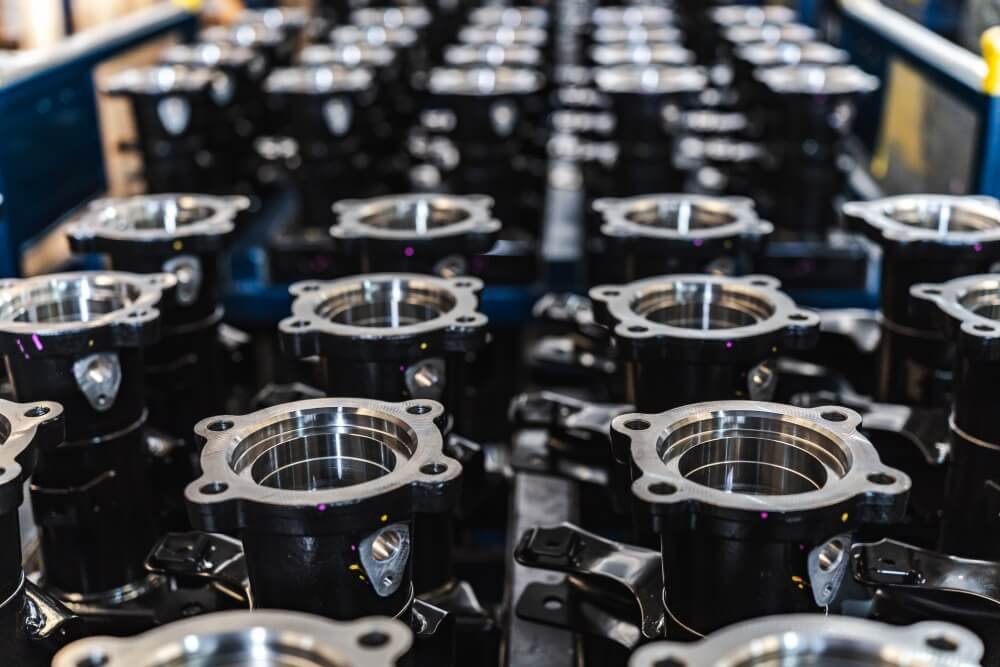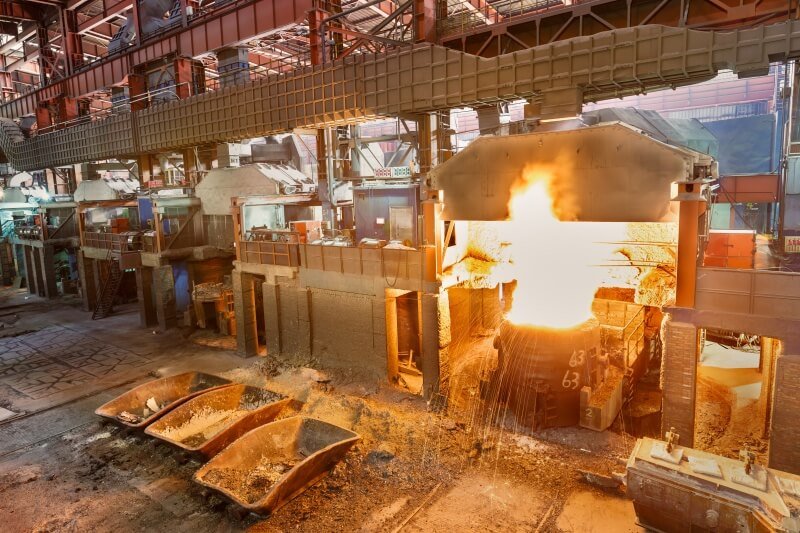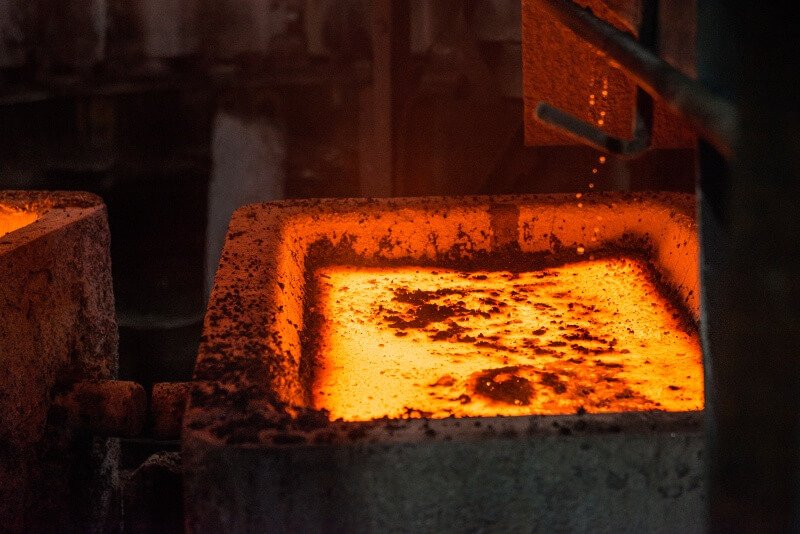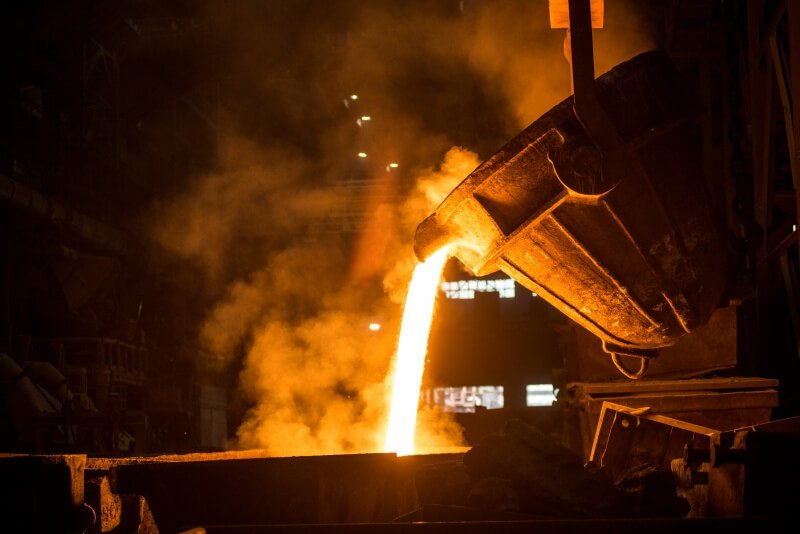Selecting the right material is never simple, and when it comes to aluminum casting grades, the stakes are high. A poor choice can trigger failures, cost overruns, and production delays that put your entire project at risk. This guide cuts through the complexity by breaking down each grade’s key characteristics, giving you the clarity and confidence to choose the optimal alloy for any engineering application.

Decoding the aluminum casting grades System
What Do The Alloy Numbers Mean?
You can quickly identify an alloy’s primary characteristics by its first digit in the four-digit system (XXX.X). Each number corresponds to a principal alloying element, which dictates the material’s core properties.
- 1xx.x: 99%+ Pure Aluminum
- 2xx.x: Copper
- 3xx.x: Silicon, Copper, and/or Magnesium
- 4xx.x: Silicon
- 5xx.x: Magnesium
- 7xx.x: Zinc
- 8xx.x: Tin
Why Does This Classification Matter?
You might be wondering how this helps you in practice. This system gives you immediate insight into an alloy’s strength, corrosion resistance, and castability before reviewing a spec sheet. This shortcut saves valuable time during the material selection process.
Key Takeaway: The First Digit is Critical
Understanding the first digit of any grade provides the most important clue to its behavior and intended use. This single number is your primary guide to navigating the vast landscape of aluminum alloys.
| Digit | Primary Alloying Element | Primary Characteristic |
|---|---|---|
| 1xx.x | Pure Aluminum | Conductivity |
| 2xx.x | Copper | High Strength |
| 3xx.x | Silicon & Copper | Versatility |
| 4xx.x | Silicon | Fluidity/Ductility |
| 5xx.x | Magnesium | Corrosion Resistance |
This naming convention provides a logical framework for comparing different aluminum casting grades at a glance.
1xx.x & 2xx.x aluminum casting grades
What Defines 1xx.x High-Purity Alloys?
The 1xx.x series alloys are defined by their exceptional purity, containing at least 99% aluminum. This results in outstanding electrical and thermal conductivity.
- High corrosion resistance
- Excellent for electrical applications
- Not suited for high-stress parts
Are 2xx.x Copper Alloys Strong Enough?
But here’s the kicker, while the 2xx.x series offers superior strength due to its copper content, this comes at a price. These alloys have lower corrosion resistance and can be more challenging to cast than other series. You will find them used in high-performance parts like engine pistons.
Key Takeaway: Purity vs. High Strength
Your choice between these two series represents a fundamental trade-off. You must decide whether to prioritize the exceptional corrosion resistance of the 1xx.x series or the raw mechanical strength of the 2xx.x series.
| Property | 1xx.x Series (Pure) | 2xx.x Series (Copper) |
|---|---|---|
| Strength | Low | High |
| Corrosion Resist | Excellent | Poor |
| Conductivity | Excellent | Good |
| Castability | Good | Fair |
This table highlights the clear performance differences driven by their respective alloying elements.
Versatile 3xx.x aluminum casting grades
Why Is The 3xx.x Series So Common?
The 3xx.x series is the workhorse of the casting industry because its alloying elements create a well-rounded and versatile material. It achieves a balance that is perfect for a huge range of applications.
- Good strength and wear resistance
- Good corrosion resistance
- Excellent castability and machinability
Where Will You Use 3xx.x Alloys?
The bottom line is you’ll specify these grades for a wide array of B2B applications. They are suitable for everything from general-purpose motor housings to more demanding structural equipment parts. This versatility makes them a reliable choice.
Key Takeaway: The Industry Workhorse
The 3xx.x series, particularly A380, is often the default starting point for die casting projects. It delivers an excellent balance of performance, castability, and cost-effectiveness for most needs.
| Application | Why 3xx.x is a Good Fit |
|---|---|
| Motor Housings | Good heat dissipation and structural integrity |
| Equipment Parts | High strength and wear resistance |
| General Purpose Casts | Excellent balance of cost and performance |
These applications demonstrate the broad utility of the 3xx.x series in industrial manufacturing.
4xx.x aluminum casting grades Explained
What Makes 4xx.x Silicon Alloys Different?
The high silicon content in the 4xx.x series significantly lowers the alloy’s melting point and improves its fluidity. This makes it ideal for creating complex and intricate parts that require the molten metal to fill every detail of a mold.
- Low melting point
- Excellent fluidity
- Good ductility and impact resistance
Is a 4xx.x Grade Right for Your Part?
Here’s the real story: you should choose a 4xx.x alloy when pressure tightness and ductility are your top priorities. It excels in applications like thin-walled housings and intricate architectural components. Its properties ensure part integrity.
Key Takeaway: Prioritize Fluidity & Ductility
This series is your go-to choice when castability for complex geometries and resistance to impact are more important than maximum tensile strength. It solves a specific set of manufacturing challenges effectively.
| Property | Rating | Benefit for Casting |
|---|---|---|
| Fluidity | Excellent | Fills intricate mold details |
| Ductility | High | Resists fracture on impact |
| Strength | Moderate | Sufficient for many designs |
| Melting Point | Low | Reduces energy costs |
The 4xx.x series is engineered for castability and toughness over raw strength.
5xx.x aluminum casting grades Deep Dive
What Are 5xx.x Magnesium Alloy Benefits?
Magnesium is the primary alloying element in the 5xx.x series, imparting a unique set of advantages. These alloys are known for their superb performance in corrosive environments and their beautiful appearance.
- Excellent corrosion resistance, especially in marine environments
- Good machinability and weldability
- Attractive surface finish suitable for anodizing
When Should You Specify a 5xx.x Grade?
Think about it: you should select this series for parts where aesthetics and environmental durability are critical. It is the premier choice for architectural components, marine hardware, and other parts visible to the end-user. Its finish holds up under harsh conditions.
Key Takeaway: Aesthetics Meet Durability
The 5xx.x series is the premium choice when your part must look good while withstanding the elements. It successfully combines form and function for high-visibility, long-lasting applications.
| Feature | 5xx.x (Magnesium) | 3xx.x (Silicon/Copper) |
|---|---|---|
| Marine Corrosion | Excellent | Good |
| Surface Finish | Excellent | Good |
| Weldability | Good | Fair |
| Strength | Moderate-High | High |
This comparison shows why 5xx.x alloys are specified for their unique combination of durability and appearance.
Niche 7xx.x & 8xx.x aluminum casting grades
Exploring High-Strength 7xx.x Zinc Alloys
The 7xx.x series uses zinc to create high-strength, heat-treatable alloys that can withstand significant stress. You will find them in demanding applications where component failure is not an option.
- Very high strength after heat treatment
- Good dimensional stability
- Good corrosion resistance
What Is The 8xx.x Tin Alloy Use Case?
Now for something completely different: the 8xx.x series, alloyed with tin, is designed for low-friction applications. Its primary use case is in specialized bearing and bushing applications. Wear resistance is its defining characteristic.
Key Takeaway: For Special Engineering Problems
The 7xx.x and 8xx.x series are not for general use but are indispensable for solving specific challenges. You should specify 7xx.x for high-stress parts and 8xx.x for low-friction, high-wear scenarios.
| Series | Primary Alloying Element | Key Application |
|---|---|---|
| 7xx.x | Zinc | High-Stress Parts |
| 8xx.x | Tin | Bearings & Bushings |
These niche alloys provide targeted solutions that common grades cannot offer.
Wrought vs. aluminum casting grades
How Does The Forming Process Differ?
The manufacturing method is the key difference you need to understand. You create cast parts by pouring molten metal into a mold, while wrought parts are mechanically formed from a solid billet through processes like extrusion or rolling. This fundamental difference dictates the final product form.
What Are The Property Implications For You?
What does this mean for your project? The fabrication method fundamentally alters the material’s grain structure and properties. Casting allows for complex, near-net-shape parts, whereas wrought processes create uniform profiles with high directional strength.
Key Takeaway: Process Determines Product Form
Your first decision is a strategic one between manufacturing methods. Choose casting for intricate, three-dimensional components or wrought processes for linear, uniform profiles that require strength in one direction.
| Attribute | Casting (e.g., Die Casting) | Wrought (e.g., Extrusion) |
|---|---|---|
| Part Complexity | High (Intricate shapes) | Low (Uniform profiles) |
| Grain Structure | Isotropic (Uniform) | Anisotropic (Directional) |
| Form | Near-Net-Shape | Profiles, Bars, Sheets |
| Tooling Cost | High | Moderate |
This shows how your choice of manufacturing process is tied directly to the part geometry and properties you need.
Strength in aluminum casting grades
Which Grades Offer Maximum Strength?
For applications demanding the highest possible strength, you should turn to the heat-treatable 2xx.x (Copper) and 7xx.x (Zinc) series. These alloys are specifically engineered to withstand extreme mechanical stress after proper heat treatment. They are the top performers in strength-critical designs.
How Does Heat Treatment Affect Grades?
This is where it gets interesting: temper designations like -T6 are not just suffixes. They represent a controlled heating and cooling process that unlocks an alloy’s maximum strength potential by refining its grain structure. This step is critical for performance.
Key Takeaway: Strength Comes with Trade-Offs
Achieving maximum strength often requires sacrificing other properties. For example, the high-strength 2xx.x series has poor corrosion resistance, and heat treatment adds to the overall part cost and production time.
| Series | Strength Potential | Heat Treatable? | Key Trade-Off |
|---|---|---|---|
| 7xx.x | Very High | Yes | Higher Cost |
| 2xx.x | High | Yes | Poor Corrosion Resist |
| 3xx.x | Good-High | Some | Balanced Performance |
This ranking clarifies that achieving the highest strength involves careful consideration of other factors.
Corrosion-Resistant aluminum casting grades
Which Grades Best Withstand The Elements?
When your primary concern is durability against environmental factors, two series stand out. The high-purity 1xx.x series offers excellent all-around corrosion resistance, while the 5xx.x (Magnesium) series provides unparalleled performance in harsh marine environments.
Can You Further Improve Corrosion Resistance?
You’re in luck, because you can protect your part with a variety of surface finishes. Processes like anodizing or powder coating create a durable, protective barrier against moisture and chemicals. Alloys in the 5xx.x series are especially receptive to these finishes.
Key Takeaway: Match The Grade to The Environment
Your alloy selection must be driven by a clear understanding of the product’s end-use environment. An indoor component has vastly different material requirements than a part that will be exposed to saltwater on a ship.
| Series | General Corrosion | Marine Environment | Suited for Anodizing |
|---|---|---|---|
| 5xx.x | Very Good | Excellent | Excellent |
| 1xx.x | Excellent | Good | Good |
| 3xx.x | Good | Fair | Good |
This rating helps you select the right grade based on the specific environmental challenges your part will face.
Cost Factors for aluminum casting grades
How Do Alloys Impact Material Cost?
The base price of an alloy is directly influenced by the market value of its primary alloying elements. Therefore, grades with significant amounts of copper (2xx.x) or zinc (7xx.x) will almost always be more expensive than common silicon-based alloys like A380.
Is Tooling a Bigger Cost Than The Alloy?
But wait, there’s more: for high-volume die casting, the hardened steel tool is a major upfront investment. This tooling cost can easily dwarf the per-part material cost over the lifetime of a project. You must factor this into your total cost analysis.
Key Takeaway: Balance Material and Process Costs
A true cost analysis requires evaluating the alloy’s unit price, the complexity and lifespan of the required tooling, and the efficiency of the casting process itself. Don’t just look at the material cost in isolation.
| Cost Factor | Description | Impact Level |
|---|---|---|
| Alloying Elements | Market price of copper, zinc, magnesium, etc. | Moderate |
| Tooling | Die cast mold design, material, and fabrication | High |
| Processing | Cycle times, energy use, post-processing required | Moderate |
| Volume | Amortization of tooling cost over number of parts | High |
This summary clarifies that total cost is a function of material, tooling, and manufacturing efficiency.
Conclusion
This guide has clarified the aluminum classification system, explained the differences between alloy series, and armed you with the criteria to balance strength, corrosion resistance, and cost. With this knowledge, you are prepared to make data-driven material decisions that will improve product performance and prevent costly errors. Ready to ensure you’ve selected the most effective and economical aluminum grade? Contact our engineering team for a free quote and material consultation today.
FAQ Section
Q1: Can I weld any aluminum casting grade? No, weldability varies significantly. Alloys in the 5xx.x series are known for good weldability, while high-copper alloys in the 2xx.x series are generally considered difficult to weld without special procedures.
Q2: What is the most common aluminum casting grade? A380, which is part of the 3xx.x series, is by far the most widely used die casting alloy. This is due to its excellent combination of castability, mechanical properties, and overall cost-effectiveness for a wide range of applications.
Q3: How does heat treatment affect aluminum casting grades? Heat treatment significantly improves mechanical properties like tensile strength and hardness. However, it is only effective on “heat-treatable” alloys, such as those in the 2xx.x (Copper) and 7xx.x (Zinc) series.
Q4: Are aluminum casting grades recyclable? Yes, aluminum is 100% recyclable without any degradation in its inherent material quality. This makes it a highly sustainable and environmentally responsible material choice for nearly any project.
Q5: Can I use a wrought alloy number for a casting project? No, the numbering systems for cast and wrought alloys are distinct and not interchangeable. For example, 380 is a cast alloy, while 3003 is a wrought alloy; specifying one for the other’s process will lead to incorrect material selection.




